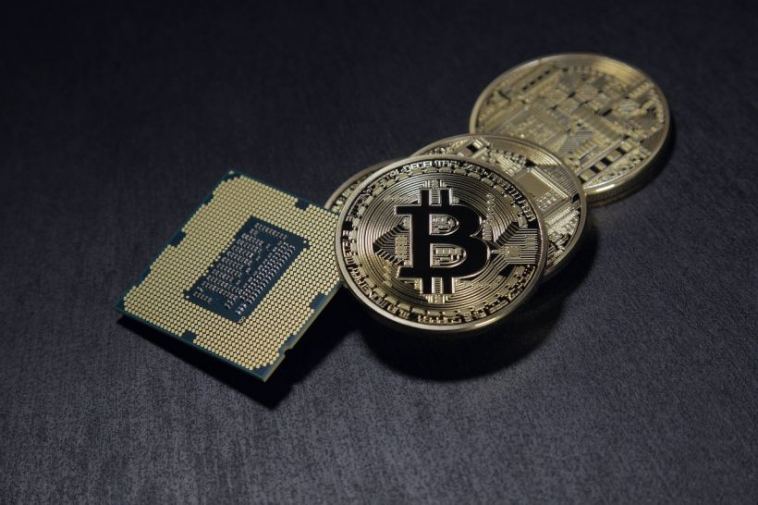- Like
- SHARE
- Digg
- Del
- Tumblr
- VKontakte
- Flattr
- Buffer
- Love This
- Save
- Odnoklassniki
- Meneame
- Blogger
- Amazon
- Yahoo Mail
- Gmail
- AOL
- Newsvine
- HackerNews
- Evernote
- MySpace
- Mail.ru
- Viadeo
- Line
- Comments
- Yummly
- SMS
- Viber
- Telegram
- JOIN
- Skype
- Facebook Messenger
- Kakao
- LiveJournal
- Yammer
- Edgar
- Fintel
- Mix
- Instapaper
- Copy Link
Introduction
A digital currency like bitcoin is a decentralized distributed money without any administrative or central bank. This digital money can be sent to anyone through the bitcoin network.
For controlling cryptocurrency a peer to peer network is used. This peer to peer network allows users receive and send bitcoin to another user. With the use of this network, bitcoin users do not need any intermediaries.
Users can exchange this bitcoin currency for other currency, products and services. But this bitcoin does not have the same value as traditional money. The value of bitcoin is fluctuating and volatile.
In research conducted by Cambridge University 2017, they estimated that there were about 2.9 to 5.8 million unique users using cryptocurrency wallets, and in this figure, most of the users are bitcoin users.
Any transaction made by this digital means of money in the name of bitcoins is verified firstly through “Node” of cryptography. After verifying these transactions, they are sent to record in a public distributed ledger; this distributed ledger is called “blockchain”. Visit https://ethereum-trader.app/ for more knowledge about bitcoin trading and investment.
It has been said that bitcoin was invented by an unknown person or a group of anonymous persons in 2008. Satoshi Nakamoto is the name used by the presumed pseudonymous person or persons who developed it.
After one year, in 2009, at the start of January, this digital money came in. an implementation as open-source software for the digital currency miners.
Bitcoin itself is essentially minted via a process known as “Mining”.
People Choose Digital Currency For Many Reasons
There are many reasons why people love bitcoin and digital currencies. Some use digital currency because of no controlling roles; participants do not need to follow any principle to give an order. “Anarchists” and libertarians are big fans of bitcoin and cryptocurrency due to the decentralized nature of most cryptocurrencies.
Many also use it because of its convenience; a digital currency allows its users a discreet purchasing availability; users can publish their bitcoin transactions voluntarily. It makes them unable to purchase without the association of any personal information and identity. Another convenience is bitcoin transactions are made through peer to peer networks; this payment solution allows them to receive and pay currency to the world without any requirement of taking permissions and approvals from the authorities.
Members also choose not to pay any fees to the bank for making any transaction. There is no fee for depositing and withdrawing money, no fee for holding an account, zero charges on an overdraft, no maintenance fee, and no fees for return deposit. Easy access by smartphones is also a valid reason to choose cryptocurrency. It allows its users to pay and receive the coins anywhere with the accessibility of the internet. So as we study this bitcoin, we will find many reasons and conditions for choosing digital currency.
The Eccentric Guide to Bitcoin Mining
In a nutshell, bitcoin miners could be looked at similarly to an accountant who keeps the record of every transaction in the blockchain. Each record is essentially proof of payments that make transactions valid. Miners also keep track of all the old and new payments and update the transactions made on the network.
So, let’s see how the miner works…
Whenever any bitcoin user issues payments to another through bitcoin, this person is saying that he wants to transfer a particular amount of coins to another account.
And now this announcement is made for the receiver in the block. At this stage, a node will start working to cross-check the payment with all the data of transactions to find if these same coins are used in another transaction to avoid double-spending.
When the nodes announce that there is no match, then the miner’s task starts to add this transaction into the blockchain. At this stage, a race starts for hashing.
First, they have to solve the blocks that are encrypted by the encryption code. These codes work on the SHA 256 algorithm that is known as a hash. A miner who finds the correct critical first will be the winner for earning bitcoin as rewording.
But this task is not that easy…
The miner has to find this key by guessing with the help of the power of computer processing. The computer comes up with the solution of best-fit series encryption. If a miner has more processing power, he can add a block to the existing blockchain.
Conclusion
This guide literally just barely scratches the surface when it comes to how bitcoin and bitcoin mining works. The underlying technology behind bitcoin, blockchain and digital cryptocurrency as a whole is quite complex. If you want to learn more about bitcoin and cryptocurrency, I highly recommend you consider taking some online or in-person courses. Bitcoin and blockchain technology is here to say so it’s quite valuable to be in the know.

